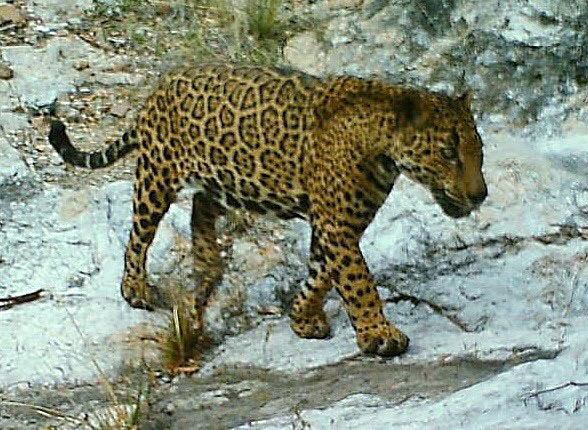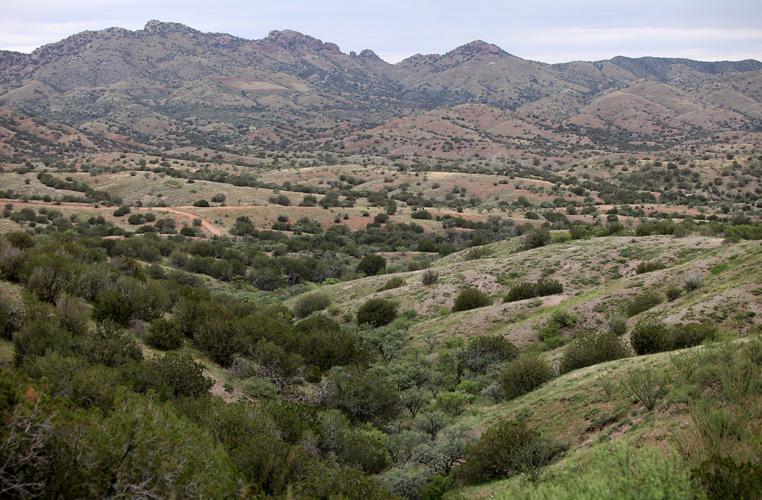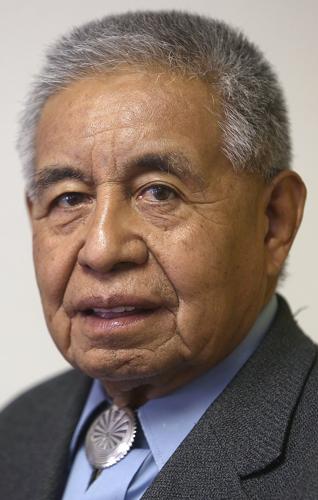The proposed Rosemont Mine will “irreparably sever” three Indian tribes’ connection to the Santa Rita Mountains and devastate a rich cultural tradition dating to 7500 B.C., the tribes say in a new lawsuit.
The lawsuit against the U.S. Forest Service says the mine would deprive tribal members of access to ancestral praying grounds, destroy a critical part of their heritage including burial grounds and stop members from engaging in important cultural practices and religious traditions.
The Tohono O’odham, Pascua Yaqui and Hopi tribes filed the suit Thursday in U.S. District Court, about 10 months after the Forest Service approved the $1.9 billion mine project.
It’s the third suit facing the mine. The others were filed by environmental groups and other parties who allege the open-pit copper mine will violate environmental laws including the federal Endangered Species Act and Clean Water Act.
The newest lawsuit explains the tribes’ views about their historic, spiritual and cultural connection to this area, and their use of it, in far more detail than the tribes usually provide, a Tohono O’odham spokesman said. Those include religious rituals and the gathering of plants and grasses.
Like one of the earlier suits, this one directly challenges the Forest Service’s continued assertion that it legally can’t say “no” to a mine under the 1872 Mining Act. That view is a fundamental error that led to a “tainted process” illegally prejudicing Forest Service decision-making, and to a host of violations of other federal laws, contends Heidi McIntosh, an attorney for the group Earthjustice that’s representing the tribes.
Coronado National Forest Supervisor Kerwin Dewberry would not comment on the lawsuit. Hudbay Minerals, the Canadian company that proposes to build the country’s third largest copper mine in the Santa Ritas southeast of Tucson, didn’t respond to a request from the Star to comment on the suit.
The Forest Service has said it required extensive mitigation for cultural resources. The agency consulted with 13 tribes and signed an agreement with the Arizona State Historic Preservation Office detailing a mitigation strategy. It prepared treatment plans, laying out how archaeological data will be analyzed, how burial discoveries will be handled and how people involved with construction will monitor archaeological sites.

A jaguar was repeatedly photographed with trail cameras near the Rosemont site from 2012 to 2015. The endangered species is considered a sacred animal by Indian tribes.
But the Forest Service has acknowledged major damages to resources will still occur. All the tribes refused to sign the agreement. However, federal historic preservation law doesn’t protect these resources if the government properly consults with affected tribes and carries out the other steps listed above.
Mine construction, to disturb 5,431 acres total including 1,197 acres of private land and the rest state and federal land, would directly affect 85 historic and prehistoric sites and indirectly affect 15, the Forest Service’s final Rosemont environmental impact statement said. Four directly affected sites are known to contain human remains, and 32 more may have them, the report said.
“Consider what it would be like if a foreign company proposed excavating Arlington National Cemetery,” Tohono O’odham tribal Chairman Edward Manuel said in a news release announcing the lawsuit. “All Americans treasure this cemetery, just like our tribes treasure the land this mine will desecrate.”
With about 400 permanent employees and a far larger group of contractors and their employees working on the project, the mine would extract about 224 million pounds of copper annually over 19 years. Its open pit would span 6,000 to 6,500 feet in all directions and drop up to 3,100 feet into the ground.
Economic studies done by an Arizona State University professor at Rosemont’s expense have concluded that the mine will bring in tens of billions of dollars in economic benefits over its life and generate three spinoff jobs for each job created at the mine.
But Manuel said there’s no real trade-off between jobs and the environment at Rosemont.
“In the short term, it’s a benefit. In the long term, it’s destruction,” Manuel said Friday in an interview. “What’s going to happen to Mother Earth once all the resources are depleted? What do we do then? Look for another planet?”

The proposed Rosemont Copper Mine’s open pit would span 6,000 to 6,500 feet in all directions and drop up to 3,100 feet into the ground.
Lawsuit quotes agency’s own report
The other Rosemont lawsuits were sparked by sharp disagreement between opponents and federal agencies over the severity of the mine’s potential impacts. Those differences are missing in this case.
The tribes’ lawsuit quotes the Forest Service’s 2013 final Rosemont environmental impact statement as saying damages to cultural sites and prehistoric and historic archaeological sites would be “severe, irreversible and irretrievable.”
“Archaeological sites and cultural landscapes cannot be reconstructed once they have been destroyed or altered,” the federal report said, adding that important information this land could provide about its history “would be destroyed.”
Villages and graves of ancestors and traditional resource gathering areas would also be destroyed, the report said. The mine also would “introduce visual, atmospheric, and audible elements that would diminish the integrity of even the physically undisturbed parts” of the area, said the report.
In the lawsuit’s view, “this disturbance would scar a landscape … containing sacred sites, ancestral villages and burial sites, and a source of plant, animal and mineral resources critical to maintaining traditional O’odham culture.”
Tribal elder Joseph Joaquin is quoted in the lawsuit as saying, “This land has always been us, and we have always been a part of this land.
“And that goes way back in our creation story of how we got here and how these lands are supposed to be taken care of; how this stewardship was awarded to people living in these lands, to manage these lands the way they see fit,” Joaquin said.
In precolonial times, the O’odham moved seasonally through this area, using it to hunt for and gather foods, harvest medicinal plants and basket-weaving material and look for reliable water sources, the suit says.
Yaquis also have consistently used these mountains, the lawsuit says. For two centuries, Yaqui medicine men have retreated to areas within the Santa Ritas to prepare for their ceremonies, it says, adding that Hopi ancestors also lived in the Santa Ritas during prehistoric migrations throughout Southern Arizona.
Excavations in the 1980s there for a potential mine done by the now-defunct Anamax Mining Co. did tremendous damage, including disturbing tribal burial grounds and removing remains and artifacts, the lawsuit says.
“The tribes believe that their ancestors’ spirits continue to live in the Santa Rita Mountains and that their burial sites are sacred places,” it says. “Tribal customs and rules forbid the disturbance of ancestral burial sites; to do otherwise would result in serious, adverse consequences.”
The suit also mentions the endangered jaguar’s presence. Most recently, a jaguar was repeatedly photographed near the Rosemont site from 2012 to 2015. This animal is imbued with spiritual significance and is sacred to all three tribes, the suit says.
It says the jaguar is known to the O’Odham as ooshad, the spotted one, and is regarded as part of the spirit world that appears to give tribal members strength and access to the world’s animating spirit.
“The jaguar is an important component of the natural environment in which human and environmental elements are linked in a web that may not be disturbed without risking adverse consequences,” says the suit. “Likewise, the Yaqui have long honored the jaguar, as documented by traditional Yaqui warrior shields that contain images of this sacred animal.”

Endangered lesser long-nosed bats swoop in to feed on the flower of a Palmer agave, or century plant. © Merlin D. Tuttle, Bat Conservation International.
Mitigation plans
The Forest Service’s cultural resource mitigation plans include:
- Revegetating disturbed areas with native grasses, forbs, shrubs and trees, with accompanying efforts to detect and treat invasive weeds.
- Conservation measures related to lesser long-nosed bat roost protection, including salvaging, planting and monitoring Palmer’s agaves where the bats live.
- Locating, designing and operating mine facilities to route stormwater around the mine and into downstream washes, to keep the mine from drying them up.
- Putting easements on several large mitigation parcels purchased by the mining company, to ensure they’re not developed.
- Monitoring and treating previously unknown archaeological sites that are discovered during construction.
- Limiting ground-disturbing activity between the mine’s exterior perimeter fence and its interior security fence surrounding waste rock and tailings, both planned for safety reasons.
But the Forest Service’s environmental report said that these and other measures won’t be effective at avoiding impacts.
“The massive movement of rock and soil and transformation of the topography would significantly impact individual cultural resources and adversely affect the integrity of the cultural landscape as a whole,” the report said.
“For the Native American tribes and the local ranching community, the adverse effects of the alteration of this cultural landscape have social and cultural impacts that cannot be mitigated.”
Forest supervisor’s position
In his decision approving the mine, Forest Supervisor Dewberry wrote that the Barrel Alternative mine scheme that he picked had several advantages over four other alternatives regarding cultural resources.
The Barrel Alternative will damage the fewest sacred springs and the lowest number of sites eligible for the National Register of Historic Places, he said. While this alternative will damage the most acres of traditional resource collection sites, it avoids one of the more significant cultural sites, a ballcourt site, he said.
He based his approval on the General Mining Act of 1872. It grants citizens the right to conduct mining activities on public lands that are open to mineral prospecting, exploration and development. This right was reaffirmed by the Multiple Use Mining Act of 1955, and it includes the placement of mine processing facilities and mine tailings and waste rock on public lands, he said.
“The Coronado may impose reasonable conditions to protect surface resources, but cannot materially interfere with reasonably necessary activities under the General Mining Law that are otherwise lawful,” Dewberry wrote.
The lawsuit, however, asserts that the 1872 mining law gives people a right to occupy and use public lands for unpatented mining claims — the kind Hudbay has on Rosemont’s national forest lands — only when they contain a valuable mineral deposit. There’s no evidence of any mineral deposits on the lands where waste rock and tailings will go, the suit says.
“Say you are doing business and it results in some kind of waste. You can’t just put it in a neighbor’s land. You have to accommodate it on your own property, or find a place to get rid of it, without causing an environmental threat,” attorney McIntosh said on behalf of the tribes. “You can’t put it on public lands and say the Forest Service can’t say no.”






